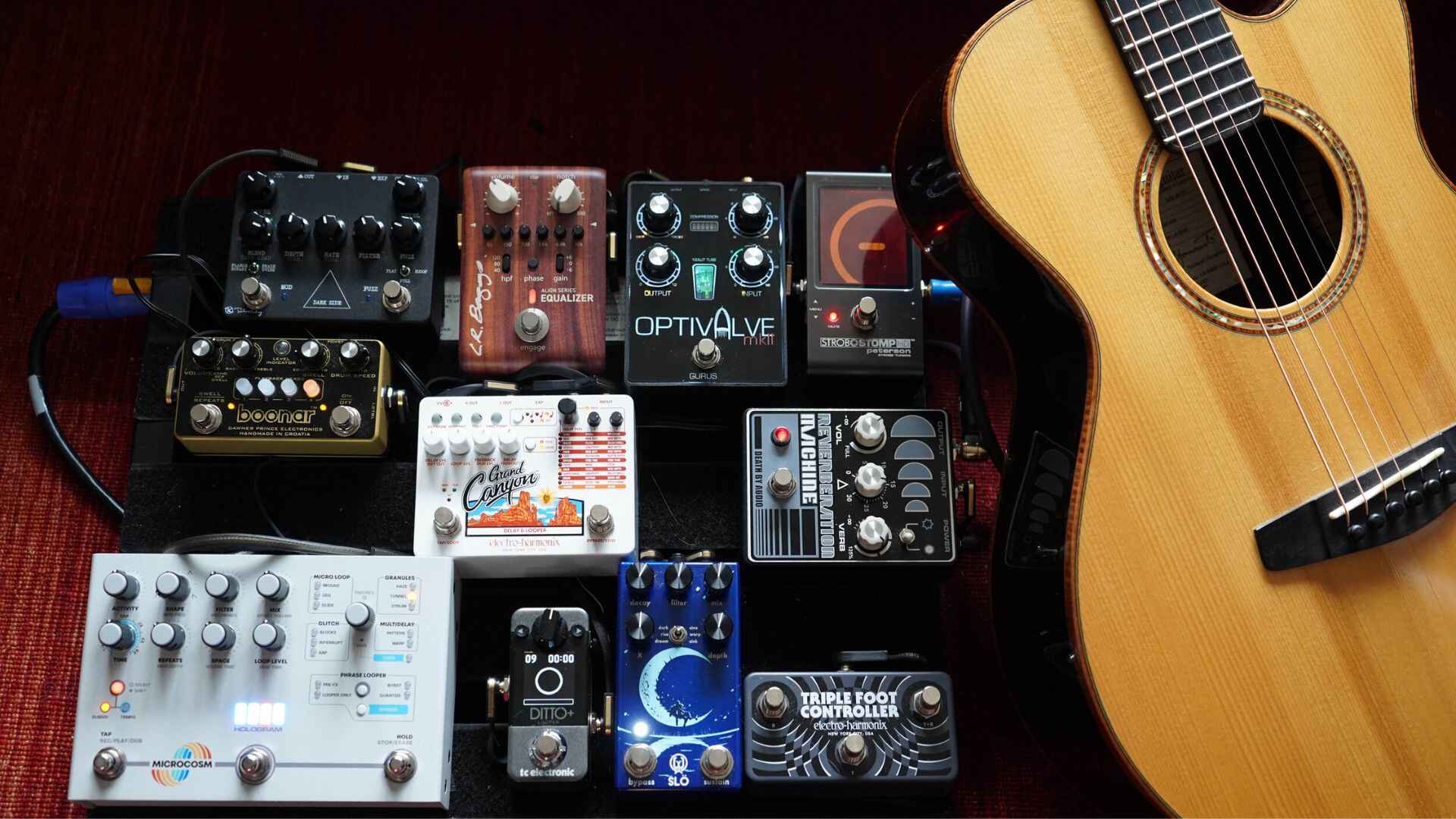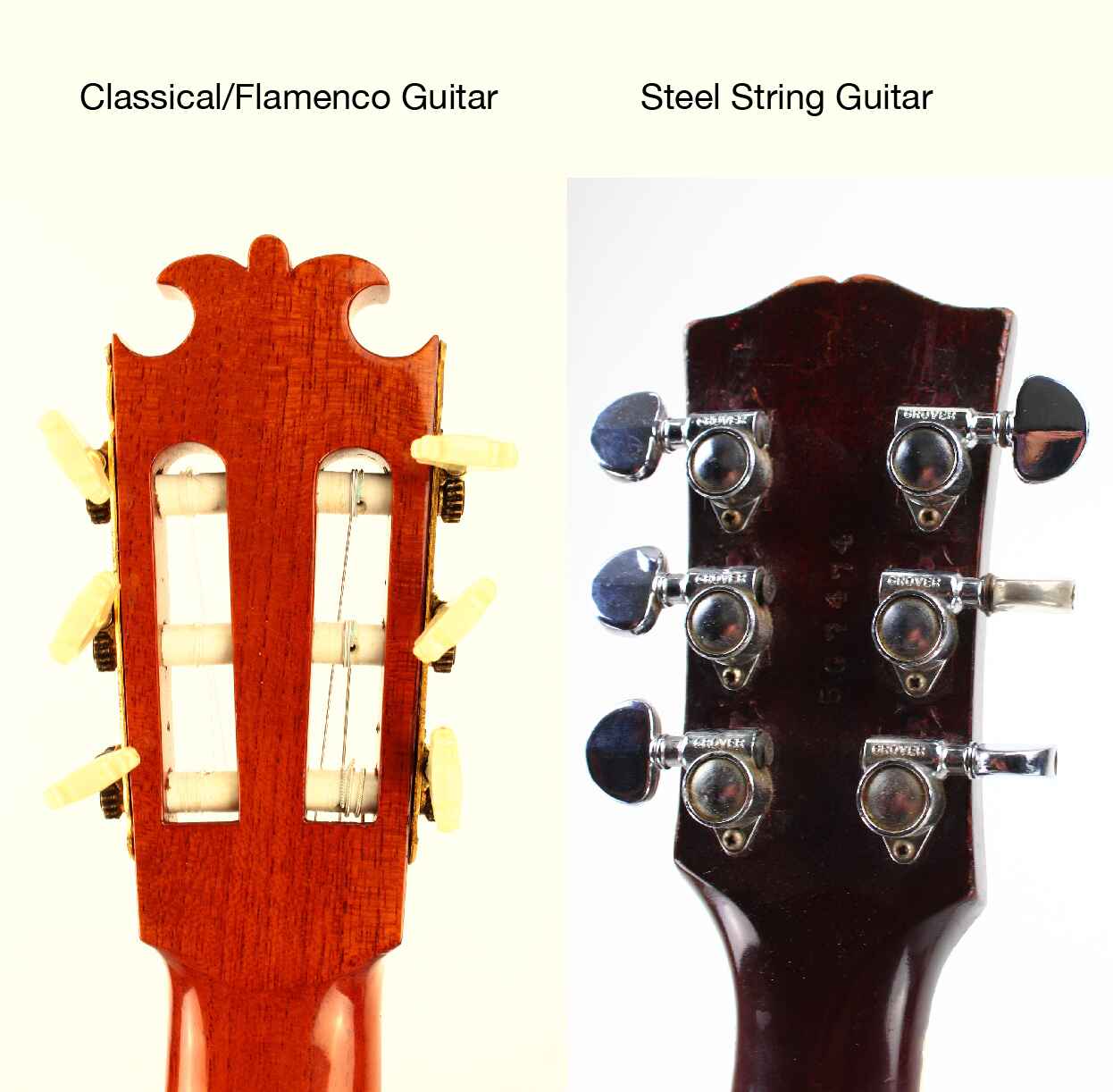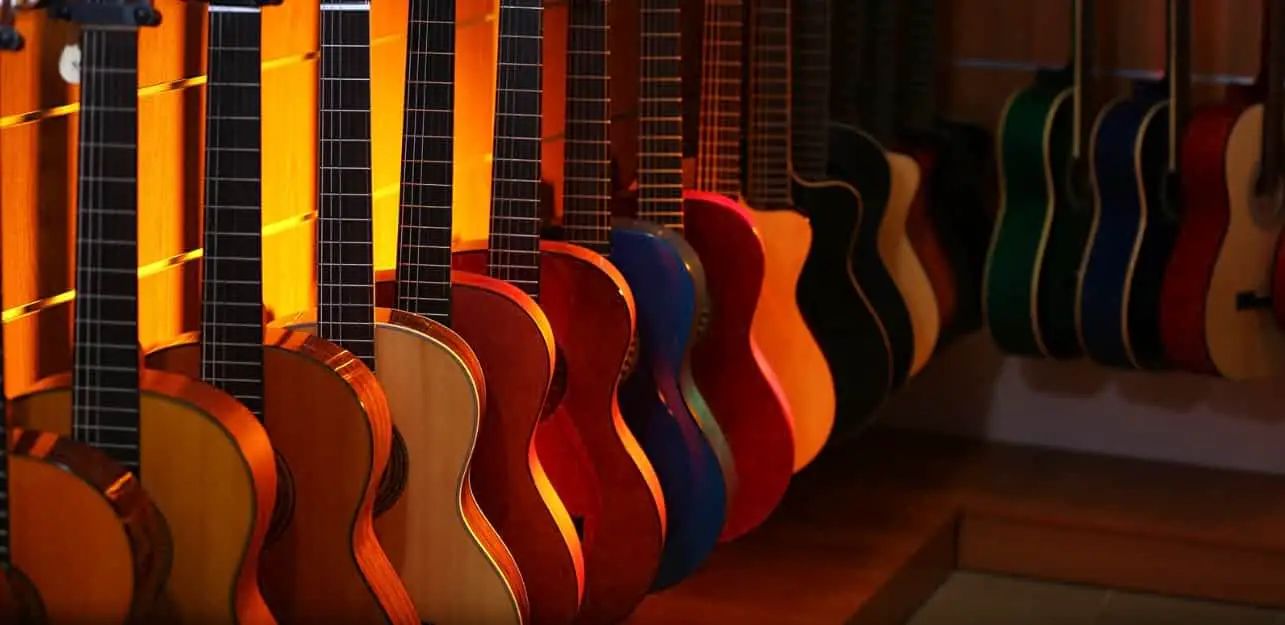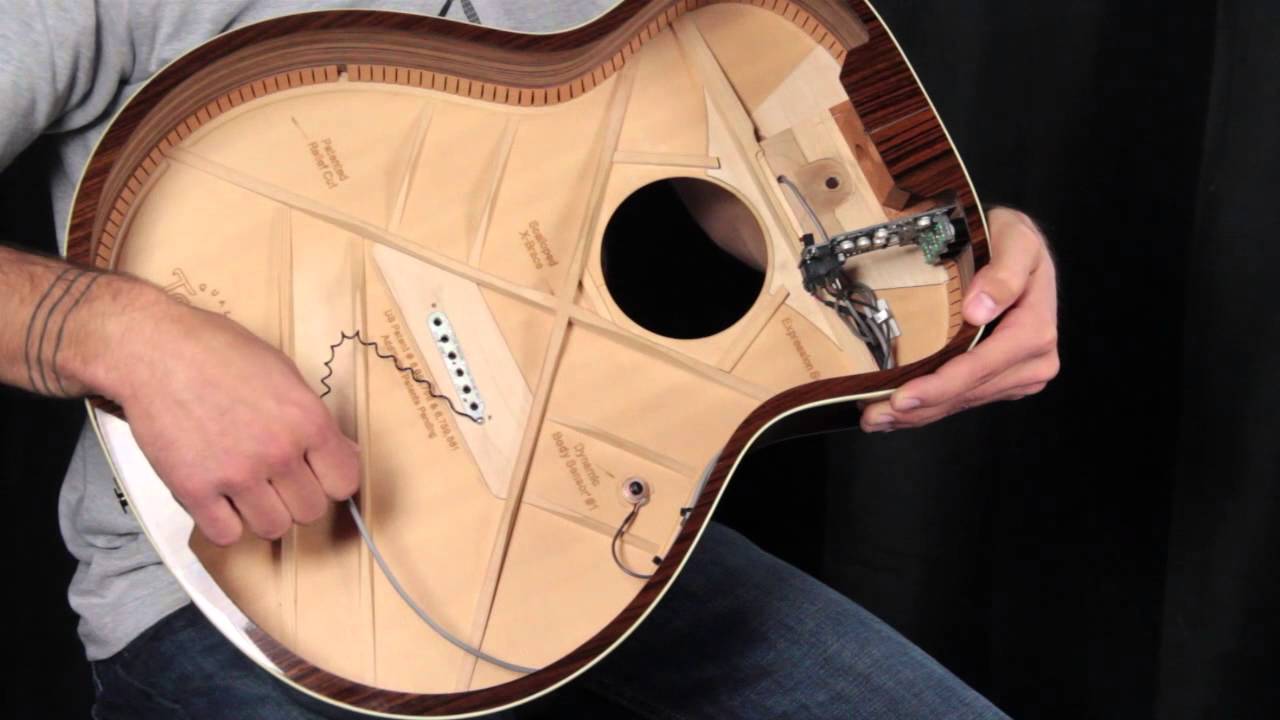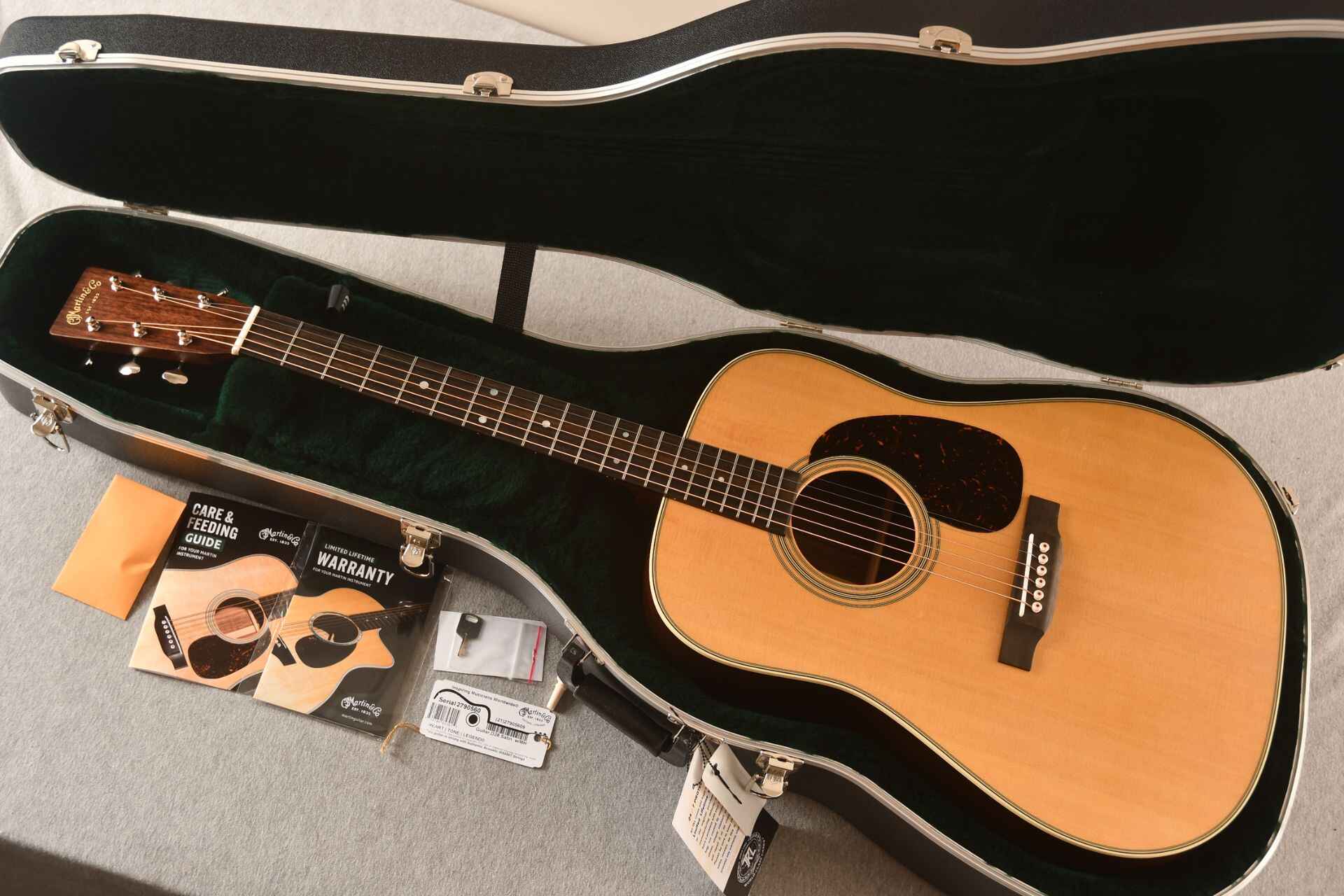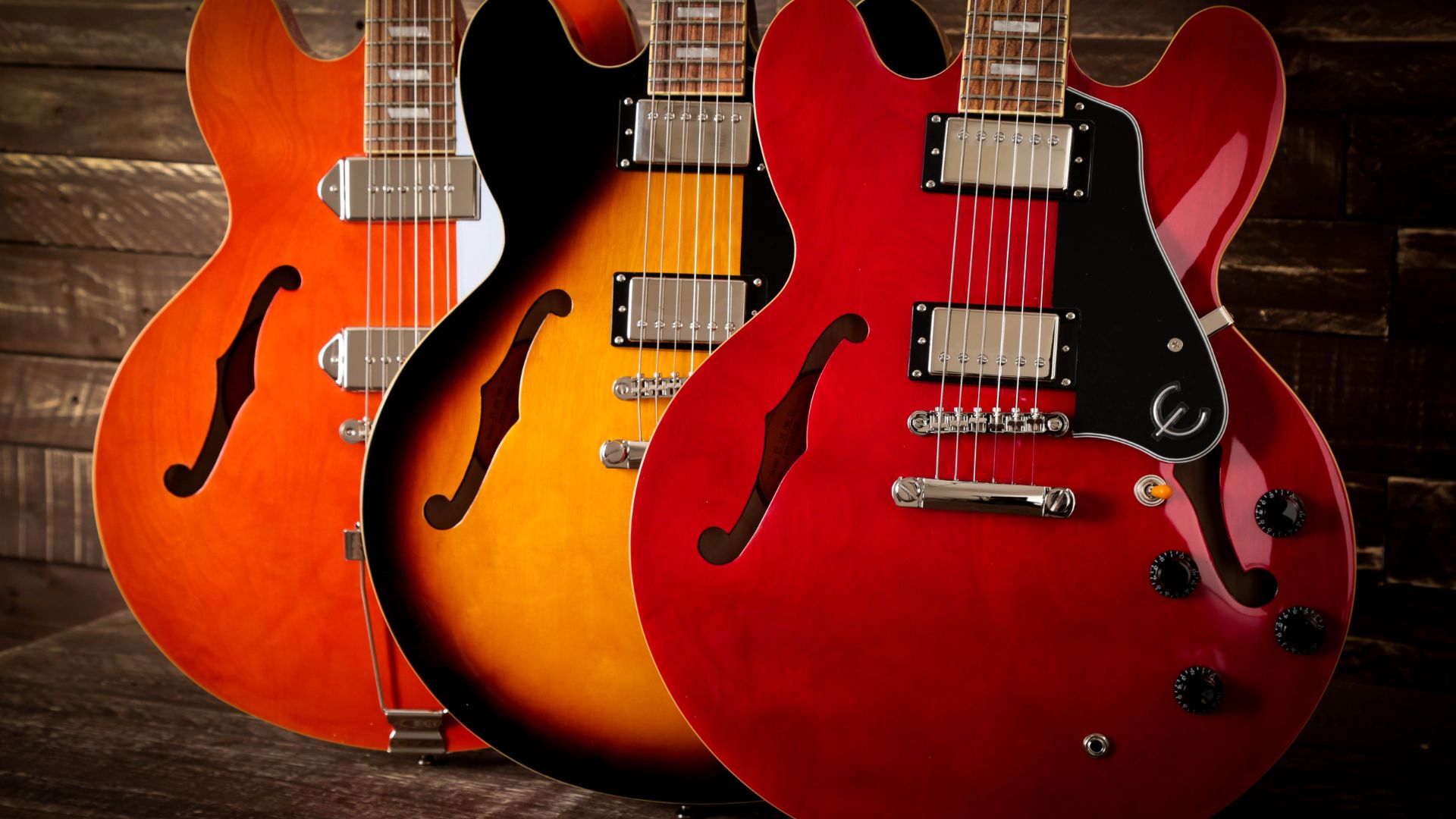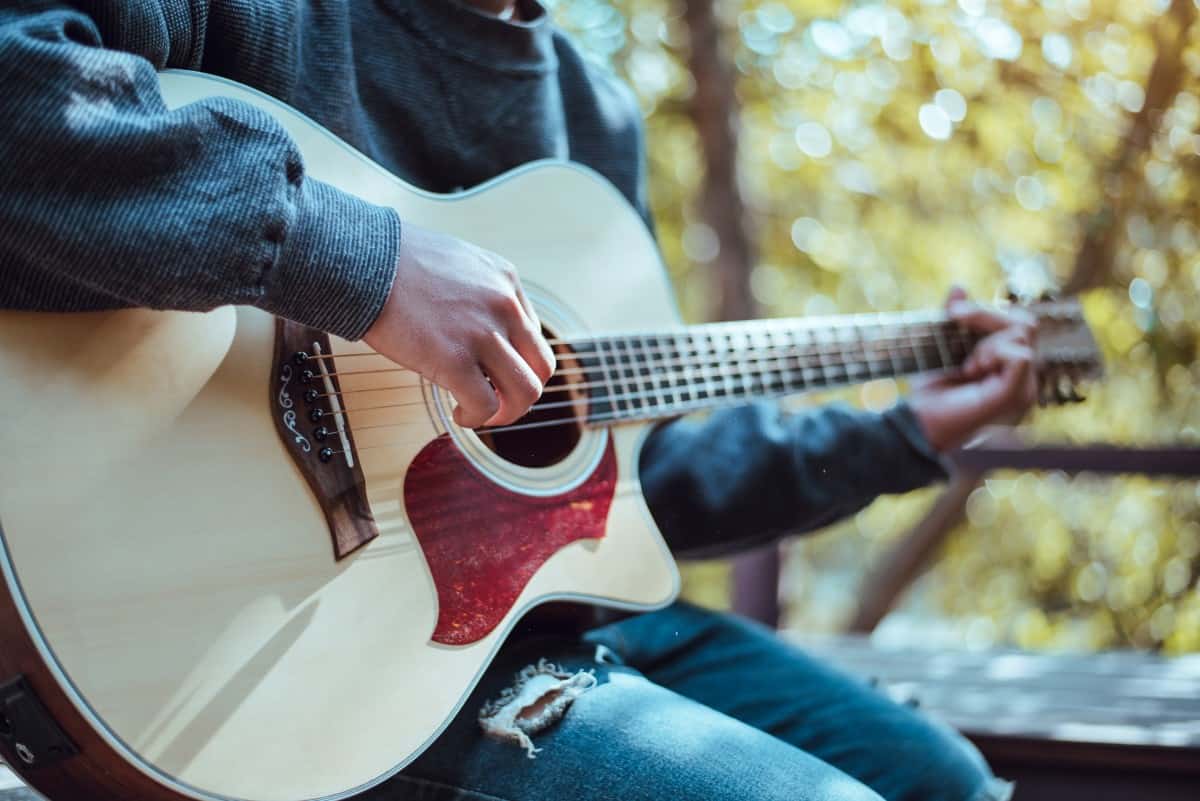Introduction
Whether you are a professional musician performing on stage or a casual strummer at home, one common desire among acoustic guitar players is to make their instrument louder. A louder guitar ensures that your sound cuts through the mix, allowing you to be heard more clearly and confidently.
While acoustic guitars are inherently quieter than their electric counterparts, there are several factors that contribute to their volume. By understanding these factors and employing various techniques, you can significantly enhance the volume and projection of your acoustic guitar.
In this article, we will explore different approaches to making your acoustic guitar louder. We will discuss the factors that affect volume, the importance of choosing the right instrument, techniques to optimize your playing for increased volume, the role of amplification and sound reinforcement, experimenting with strings, and regular maintenance tips.
Whether you play in a band, record in a studio, or simply want a fuller sound for personal enjoyment, this guide will provide you with valuable insights and practical tips to help you achieve a louder and more resonant acoustic guitar sound.
Understanding Acoustic Guitar Volume
Before delving into the various ways to increase the volume of your acoustic guitar, it is essential to understand the factors that contribute to its volume. By having a clear understanding of these factors, you can make informed choices to optimize your instrument’s volume.
When it comes to acoustic guitar volume, several elements come into play. Firstly, the guitar’s body shape and size greatly influence its volume. Generally, larger-bodied guitars, such as dreadnoughts and jumbos, produce more volume due to their larger sound chambers.
The material used to construct the guitar also affects its volume. Certain tonewoods, such as spruce, mahogany, and cedar, are known for their ability to enhance volume and projection. Additionally, the bracing pattern inside the guitar, which reinforces the top, can impact the overall volume and resonance.
Furthermore, the age and condition of the guitar can affect its volume. Over time, acoustic guitars tend to open up and mature, resulting in improved tone and increased volume. Regular maintenance, such as changing old strings and keeping the guitar properly humidified, can help preserve its volume.
It’s worth noting that playing style and technique also impact acoustic guitar volume. Techniques like strumming with force and precision, utilizing open chords, and employing techniques that maximize string vibrations, such as fingerpicking and alternate picking, can all contribute to a louder sound.
While understanding the factors that affect acoustic guitar volume is important, it is also essential to recognize that there are limitations. Acoustic guitars are inherently quieter than electric guitars, and they rely on their natural resonance to produce sound. Therefore, it is necessary to explore additional methods to maximize your instrument’s volume, which will be discussed in the subsequent sections.
Factors Affecting Acoustic Guitar Volume
Several key factors influence the volume and projection of an acoustic guitar. Understanding these factors can help you make informed decisions when selecting or modifying your instrument to optimize its volume.
1. Guitar Body Size and Shape: The size and shape of the guitar’s body play a significant role in determining volume. Larger body sizes, such as dreadnought or jumbo, provide more airspace inside, enabling them to produce a louder sound compared to smaller-bodied guitars like parlors.
2. Tonewoods: The choice of tonewoods has a considerable impact on volume. Different tonewoods have distinct characteristics that affect the guitar’s resonance and projection. Spruce, for example, is known for its excellent volume and dynamic range, making it a popular choice for the soundboard. Mahogany and rosewood also contribute to a desirable volume and tonal balance.
3. Bracing: The bracing pattern inside the guitar affects its volume. Bracing provides structural support to the top, influencing the way it vibrates and resonates. Various bracing patterns, such as X-bracing or scalloped bracing, can enhance volume by allowing the top to move more freely and produce a fuller sound.
4. Strings: The type of strings used on an acoustic guitar affects its volume. Lighter gauge strings tend to produce a brighter sound with less volume, while heavier gauge strings offer a fuller tone and increased volume. Experimenting with different string types and gauges can help find the right balance between tone and volume.
5. Playing Technique: The way you play the guitar greatly influences its volume. Strumming with precision and applying more force to the strings can boost volume. Utilizing open chords and techniques that maximize string vibrations, like fingerpicking or alternate picking, can also contribute to a louder sound.
While these factors are significant in determining acoustic guitar volume, it is important to note that each guitar is unique, and personal preference also plays a role. It’s always recommended to try out different guitars and consider how they sound to your ears before making a final decision.
Choosing the Right Acoustic Guitar
When it comes to increasing the volume of your acoustic guitar, selecting the right instrument from the outset is crucial. Here are some considerations to help you choose a guitar that maximizes volume and projection.
1. Body Size: Opt for a larger-bodied guitar, such as a dreadnought or jumbo, as they offer more airspace inside, resulting in increased volume and resonance. However, keep in mind that larger guitars may be less comfortable to play for some individuals, so find a balance between volume and comfort.
2. Tonewoods: Pay attention to the tonewoods used in the construction of the guitar. Different tonewoods have varying acoustic properties that can affect volume. Spruce, cedar, and mahogany are popular choices known for their ability to enhance volume and tonal balance.
3. Bracing: Consider the bracing pattern used in the guitar. Well-designed bracing supports the top, allowing it to vibrate optimally and produce a louder and more resonant sound. Look for guitars with scalloped or forward-shifted bracing to maximize volume.
4. Playability: Choose a guitar that feels comfortable to play. The ease and comfort with which you can navigate the fretboard and execute different playing techniques can significantly impact your volume. Playability is subjective, so try out different guitars to find one that suits your playing style and feels right in your hands.
5. Build Quality: Look for a well-built guitar with solid construction. A high-quality instrument will have better overall resonance and projection, resulting in improved volume. Check for solid joins, smooth fretwork, and sturdy hardware to ensure a guitar that will enhance your sound.
6. Try Before You Buy: Whenever possible, try out multiple guitars before making a purchase. Each instrument has its own unique characteristics and sound, and what works for one person may not work for another. Listen to how each guitar projects and resonates, and choose the one that sounds and feels right to you.
By carefully considering these factors and trying out different guitars, you can choose an instrument that not only suits your playing preferences but also provides the volume and sound projection you desire.
Enhancing Your Acoustic Guitar’s Sound
While selecting the right acoustic guitar is essential for achieving optimal volume, there are several additional steps you can take to enhance your instrument’s sound and maximize its volume and projection.
1. String Action: Ensure that the action, or the height of the strings from the fretboard, is properly set up. A higher action can hinder the guitar’s vibration and dampen the volume. Adjusting the action, either through truss rod adjustments or bridge saddle modifications, can improve the guitar’s playability and maximize volume.
2. Nut and Saddle: Consider upgrading to a bone or synthetic material nut and saddle. These materials transmit vibrations more effectively, allowing for better resonance and volume transfer. A well-fitted nut and saddle can make a noticeable difference in the sound of your acoustic guitar.
3. Soundhole Cover: Experiment with using a soundhole cover or feedback buster. These accessories can help reduce unwanted feedback when playing at high volumes, allowing you to play with more confidence and control. They can also enhance the guitar’s overall projection by redirecting the sound waves forward.
4. Fingerpicking Style: If you primarily use a pick when playing, try incorporating fingerpicking techniques into your playing style. Fingerpicking allows for greater control over individual notes, allowing you to bring out the nuances and increase the volume by plucking the strings with precision and intention.
5. Fretboard Technique: Experiment with different fretboard techniques to maximize volume. Using hammer-ons, pull-offs, and slides can add dynamics to your playing and amplify the overall sound of the guitar. Explore different techniques to find what works best for you and suits the style of music you play.
6. Experiment with Different Picks: Try using picks of various materials and thicknesses to find one that complements your playing style and enhances the volume. Thicker picks can produce a stronger attack and result in a louder sound, while lighter picks may offer increased sensitivity and control.
Remember that enhancing your guitar’s sound and increasing volume is a journey of experimentation and discovery. Take the time to explore different techniques, accessories, and playing styles to find what works best for you and your acoustic guitar.
Playing Techniques to Increase Volume
Mastering specific playing techniques can significantly increase the volume and projection of your acoustic guitar. By implementing these techniques into your playing style, you can produce a louder and more dynamic sound.
1. Strumming with Force: Strumming with more force and energy can make a significant difference in volume. Use a combination of downstrokes and upstrokes to create a strong attack on the strings, allowing them to vibrate more vigorously and produce a louder sound.
2. Utilizing Open Chords: Open chords, which involve playing certain notes open instead of fretting them, can result in a fuller and louder sound. These chords make use of open strings, adding resonance and volume to your playing.
3. Maximizing String Vibrations: Fingerpicking and alternate picking techniques can help maximize the vibrations of the strings, thereby increasing volume. By plucking the strings closer to the soundhole and using a combination of fingers or a pick, you can create a more resonant and projected sound.
4. Dynamics: Incorporate dynamics into your playing by varying the intensity of your strumming or picking. Playing softly in some parts and gradually increasing the volume in others adds an expressive quality to your music and allows the guitar to shine through with more impact.
5. Rolling Chords: Instead of strumming all the strings at once, try rolling the chords by arpeggiating them. This technique involves playing each note of the chord individually, which allows for greater clarity and volume in the overall sound.
6. Precise Articulation: Pay attention to the clarity of your notes and the precision of your articulation. Cleanly fretting the strings and ensuring that each note rings out clearly can make a significant difference in volume and overall sound quality.
7. Experiment with Percussive Elements: Incorporating percussive elements, such as tapping the guitar’s body or using your guitar as a percussion instrument, can add a new dimension of volume and rhythm to your playing. This technique can be particularly effective when performing solo or in acoustic arrangements.
Remember, practice is key when incorporating these techniques into your playing style. Take the time to hone your skills and experiment with different approaches to find what works best for you and your acoustic guitar. With time and dedication, you can master these techniques and bring out the full potential of your instrument’s volume and projection.
Using Amplification and Sound Reinforcement
When it comes to increasing the volume of your acoustic guitar, utilizing amplification and sound reinforcement can have a significant impact. These tools allow you to project your guitar’s sound to a larger audience or enhance its volume in various performance settings.
1. Acoustic Guitar Pickups: Install an acoustic guitar pickup to amplify the sound of your instrument. Pickups are designed to capture the vibrations of the strings and convert them into an electrical signal that can be amplified. There are different types of pickups available, including undersaddle, soundboard transducer, and soundhole pickups, each with its own advantages and tonal characteristics.
2. Acoustic Guitar Preamps: Connect your guitar’s pickup to an acoustic guitar preamp before sending the signal to an amplifier or sound system. Preamps help shape the tone and provide additional control over volume, EQ, and other sound parameters. They can also reduce unwanted feedback by allowing you to fine-tune your guitar’s signal.
3. Acoustic Guitar Amplifiers: Use an acoustic guitar amplifier specifically designed to reproduce the natural sound of your instrument. These amplifiers are designed to avoid coloration and faithfully reproduce the acoustic qualities of your guitar. Some acoustic amplifiers also feature built-in effects and additional inputs, offering versatility for different performance scenarios.
4. PA Systems: In larger venues or outdoor settings, utilize a PA (public address) system to amplify your acoustic guitar. PA systems consist of speakers, a mixer, and other sound reinforcement equipment. Connect your guitar using a direct input or through a microphone to ensure your sound is adequately amplified for the audience.
5. Monitor Systems: When performing on stage, consider using monitor systems. These dedicated speakers are positioned on stage and provide a clear and balanced mix of your guitar’s sound, ensuring you can hear yourself distinctly without overpowering your fellow bandmates or performers.
6. Soundhole Feedback Dampeners: To prevent unwanted feedback when using amplification, consider using soundhole feedback dampeners. These devices are placed inside the soundhole and help minimize feedback caused by high-volume stage environments.
Remember to experiment with the settings and placement of your amplification and sound reinforcement equipment to find the optimal balance and sound for your acoustic guitar. Each performance scenario may require adjustments to ensure your guitar’s volume is projected effectively while maintaining the natural sound and tone of your instrument.
Experimenting with Different Strings
One often overlooked aspect of increasing the volume of your acoustic guitar is the choice of strings. Strings not only affect the tone and playability of your guitar but also have a significant impact on its volume and projection. By experimenting with different strings, you can find the perfect match to enhance the volume and overall sound of your instrument.
1. String Gauge: The gauge of the strings refers to their thickness. Lighter gauge strings are generally easier to play and produce a brighter tone but may have less volume. On the other hand, heavier gauge strings provide more volume and a fuller tone but require more finger strength to play. Try different string gauges to find the balance that suits your playing style and desired volume.
2. String Material: The material used to make the strings can profoundly affect the volume and tone of your acoustic guitar. Bronze and phosphor bronze are the most common types of acoustic guitar strings, providing a balanced tone with good volume. However, other materials like silk and steel, nickel, or coated strings can also influence the volume and sustain of your guitar. Experiment with different string materials to find the combination that suits your acoustic guitar and desired sound.
3. Coated Strings: Consider trying coated strings, which have a protective coating to prolong their lifespan and maintain their tone. Coated strings can enhance the volume and brightness of your guitar while reducing the risk of corrosion caused by sweat and dirt. Although they may be pricier than regular strings, coated strings can deliver a consistent tone and volume over an extended period.
4. String Tension: The tension of the strings can affect both playability and volume. Higher tension strings can enhance the volume and projection of your guitar but may require a bit more finger strength to fret and bend. Lower tension strings offer ease of playability but may sacrifice some volume. Finding the right balance of tension can be a personal preference, so experiment to find what suits your playing style.
5. String Brand: Different string brands can have subtle variations in construction and material, resulting in varied volume and tonal characteristics. Explore strings from different manufacturers to discover the brand that offers the desired volume and sound for your acoustic guitar.
Remember, when changing strings, allow time for them to settle and stretch before evaluating their volume and tonal qualities. Additionally, remember to take into account the specific characteristics of your guitar, as different guitars may respond differently to various string choices. By experimenting with different strings, you can find the perfect combination that maximizes the volume and brings out the best in your acoustic guitar’s sound.
Regular Maintenance and Care for Volume Optimization
A well-maintained acoustic guitar not only improves its overall playability but also ensures optimal volume and sound projection. By following regular maintenance practices, you can keep your instrument in peak condition and maximize its volume.
1. Keep the Guitar Hydrated: Acoustic guitars are sensitive to changes in humidity, which can affect their volume and overall performance. Use a guitar humidifier to maintain the proper moisture level, especially in dry climates or during the winter months. Keeping the guitar hydrated helps prevent the top from drying out and losing volume.
2. Change Strings Regularly: Strings gradually lose their brightness and volume over time. Regularly changing your strings ensures that you are always playing with fresh, vibrant strings that can enhance volume and tonal qualities. Aim to change your strings every few months or as needed, depending on your playing frequency and personal preference.
3. Clean the Guitar: Regularly clean your guitar to remove dirt, sweat, and debris that can accumulate on the surface and affect its volume and resonance. Use a soft cloth to wipe down the body, neck, and strings after each playing session. Use a non-abrasive guitar cleaner to remove stubborn grime and fingerprints.
4. Check and Adjust Truss Rod: The truss rod plays a crucial role in maintaining the guitar’s neck straightness and proper action. Periodically check the neck relief and adjust the truss rod if necessary. A well-adjusted neck contributes to better playability and optimal volume by ensuring the strings vibrate freely with the proper action.
5. Inspect and Maintain the Nut and Saddle: The nut and saddle are critical components for optimal volume transfer and sustain. Inspect them regularly for signs of wear or damage and have them replaced if necessary. Properly lubricate the nut slots and saddle to reduce friction, allowing the strings to vibrate freely.
6. Protect the Guitar: Use a padded guitar case or gig bag to protect your instrument from accidental damage, temperature changes, and excessive humidity. Avoid exposing the guitar to extreme temperatures or drastic humidity changes, as these can negatively impact its volume and overall playability.
By incorporating these regular maintenance practices into your guitar care routine, you can optimize the volume and performance of your acoustic guitar. Properly maintaining your instrument ensures that it stays in top shape, allowing you to enjoy its full volume potential and prolong its lifespan.
Conclusion
Increasing the volume of your acoustic guitar is a combination of selecting the right instrument, employing effective playing techniques, and optimizing its sound through various methods. By understanding the factors that affect volume, choosing the appropriate guitar, experimenting with different strings, and employing playing techniques that maximize volume, you can enhance the sound and projection of your instrument.
Additionally, utilizing amplification and sound reinforcement can further boost the volume during live performances, while regular maintenance and care ensure that your guitar remains in optimal condition for volume optimization.
Remember that each acoustic guitar is unique, and the journey to finding the perfect volume may require some experimentation and exploration. Take the time to listen, try different approaches, and understand the characteristics of your specific instrument.
Whether you are performing on stage or playing for your own enjoyment, the quest for a louder acoustic guitar is not just about volume but also about achieving a rich, resonant, and dynamic sound that captivates both you and your audience. So, keep playing, experimenting, and embracing the possibilities of your acoustic guitar’s volume potential.









